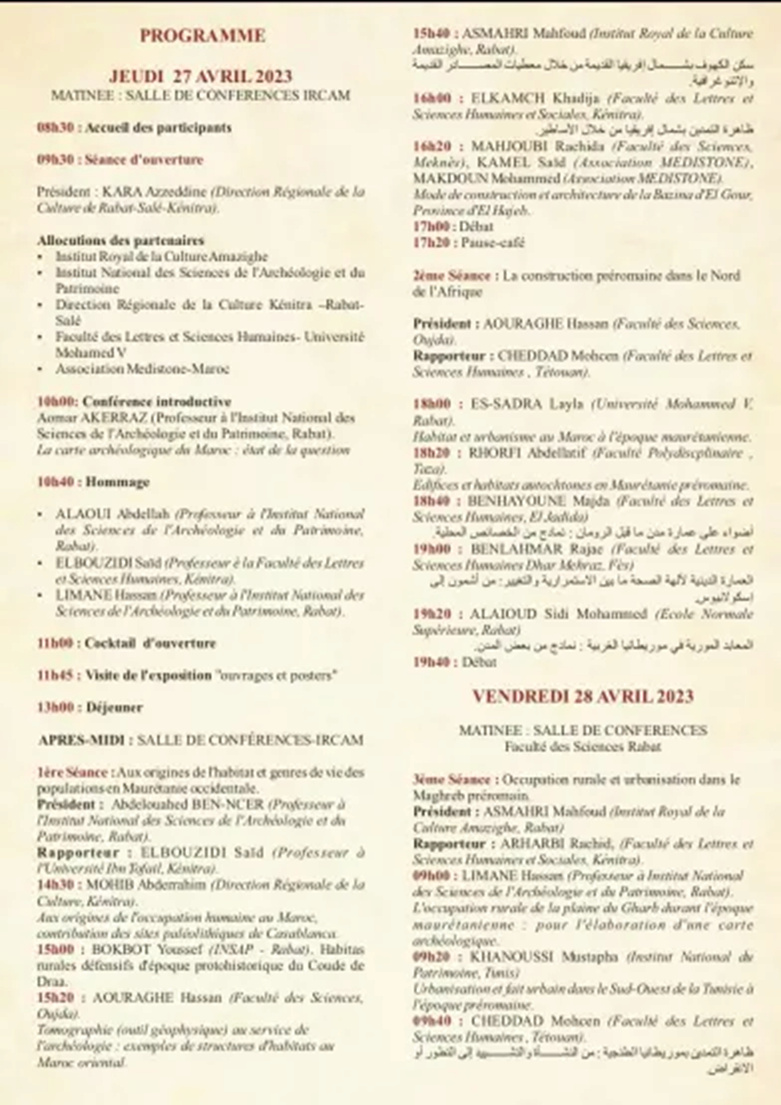The seventh edition of the International Conference on the Pre-Roman Material Heritage in North Africa

The Royal Institute of Amazigh Culture and the Faculty of Sciences of Mohammed V University, with the support of the National Institute of Archaeological Sciences, are organizing the seventh edition of the International Conference on the Material Heritage of the Pre-Roman Era in North Africa, examining the nature and privacy of housing in this part of the Mediterranean world, during April 27-28-29 Welcome to the Royal Institute.

In order to avoid all ambiguity regarding the concept of housing, the focus will only be on its material effects that withstand the conditions of time and the destructive impact of natural phenomena. The forum's interest will be focused mainly on static housing formed from solid materials, which dates back more than 320,000 years, and is associated with the emergence of Homo sapiens, eager to settle down and produce what he needs from food, by establishing this type of housing, whose forms differed according to the terrain data, the nature of the exploited field, and the living requirements of its residents. And their survival, in addition to the dangers that they are likely to be exposed to from time to time.

With the end of his lifestyle based mainly on movement and nomadism, and the transition to stability and agricultural exploitation of the land, the Maghreb man faced the problem of controlling his vital field, of which housing is one of the main components.
The distinction between rural housing in the form of a village and urban housing in the form of a city is based on the size and density of the population. The results of the archaeological surveys that so far concerned the valley of North Africa and the analysis of most of the Greek and Latin textual sources and the physical data revealed by the excavations help us to identify a large group of human settlements in the most important regions of Numidia and Mauritania. It is noticeable that this control in the field has completed its components before friction with the Phoenicians who settled in the western Mediterranean around the twelfth century BC, depending on the operative of some ancient textual sources and around the eighth century BC through the analysis of a significant amount of archaeological data. And by approaching its various elements and conditions of its formation, all the scientific presentations programmed within the framework of this seventh edition of the series of international symposiums that are organized to explore the depths of the past of North Africa before the Roman occupation will work by answering the following question:

And revealing how to control the rural area: housing and the lifestyles of the inhabitants of the desert, and the phenomenon of urbanization: the textual and material sources adopted, the urbanization approaches or the classification of cities, the pre-Roman construction (technologies, decoration materials…). The extent of reliance in the later periods of the ancient Mediterranean world on the Numidian-Mouri heritage in the field of urbanization and architecture.
Among the most important objectives of the symposium; development of ancient sites in the Maghreb; Introducing its Phoenician, Punic, Numidian, and Moorish historical periods; Standing on the outcome of recent research on these periods; Defining new horizons for research on the history and antiquities of the Maghreb in ancient times.
A group of professors will also be honored during the symposium.
Source : websites

